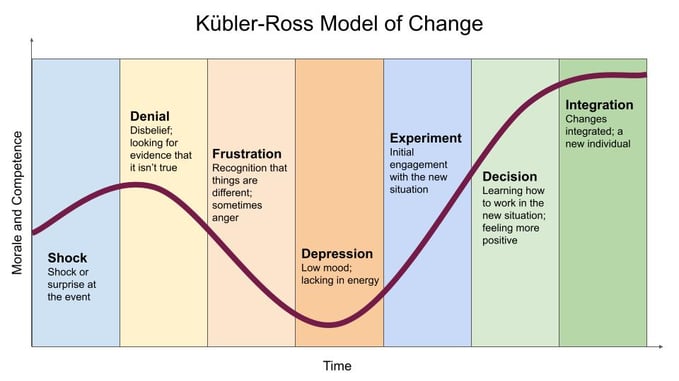New Research Shows Major Improvements in Rural STEMI Treatment Times With Pulsara
A new research study, published in The Journal of the American College of Cardiology (JACC), shows the use of Pulsara in a STEMI-focused initiative...
3 min read
 Team Pulsara
:
Sep 17, 2021
Team Pulsara
:
Sep 17, 2021

EDITOR'S NOTE: Special thanks to Kate Leatherby for writing today's blog post. You can connect with her on LinkedIn.
__
Change management is something I learned about during the course of my academic adventures, and at the time, it made a lot of sense. I could think of numerous examples of both failures and successes in change management that I had observed or been directly involved in during the span of my professional career. My studies had armed me with some valuable knowledge of different change management frameworks and ways to overcome and navigate process and people challenges. But I had never had a chance to apply my acquired skills in such a dramatic way until I started working at Pulsara.
One of the first things I remember hearing about when I started at Pulsara was: “We have a saying here: change is 5% the technology, 15% process, and 80% about people.”
Hearing that excited me, because I knew that the research into the discipline of change management supported that statement, and I was thrilled to work for a company that put people at the front and center of everything they do.

Change is hard for most people, and there are many reasons why. Cultural and process changes can affect people neurologically, socially, psychologically, or even physiologically. Resistance to change doesn’t necessarily equal opposition. Taking the time to understand how change affects people and working to overcome obstacles people face when navigating change also has a direct impact on productivity. Organizations that have a well-oiled change management process see less financial impact than those that don’t prioritize it when initiating change.
I was recently reading an article on the Prosci website titled “What is Change Management.” The Prosci organization is a global leader in change management and the creators of the ADKAR framework. This particular excerpt from the article really embodies the importance of the people aspect to change and the impact of people on an organization:
“Organizations don't change, people do. It is the cumulative impact of successful individual change that brings about successful organizational change. If individuals don't make changes to their day-to-day work, an organizational transformation effort will not deliver.”
I’m sure that most of you remember learning about the Kübler-Ross Change Curve at some point in your life. Resistance to change is normal, and it should be something that change leaders anticipate. Things like shock, denial, and frustration do not mean that those in your organization are opposed to change; those are normal human responses that need to be accounted for. If we recognize and understand the human response to change, we can implement change management strategies that minimize the financial impact to our organization.

Elisabeth Kubler-Ross Model: ekrfoundation.org
So how do we become better so that we can help minimize the impact of necessary change? There are many existing frameworks out there, courses, and certifications one can obtain, but I think Gleicher’s Formula for Change (later refined by Kathie Dannemiller) is a simple concept and a good place to start. The formula says:
D x V x F > R
Dissatisfaction x Vision x First Concrete Steps > Resistance
Getting on the same page with all team members involved can help reduce the friction caused by introducing something new. That way, everyone has a chance to be involved in the process. You are much more likely to see buy-in across the board if everyone is involved and feels heard in their concerns.
Painting a clear picture of the end goal of the change will also help everyone adjust to the idea. When team members understand the "why" behind the change and see the positive impacts it's meant to bring about, they'll be more willing to participate.
And finally, helping everyone understand the vision for the future is just as important as outlining the first steps toward making the change happen. By defining a clear expectation of the steps that need to be taken, you'll set team members up for success in knowing what their role in the process will look like.
For further reading on how change affects us as humans and how to effectively plan for it, check out these resources:
What do you do when change is necessary? Healthcare leaders from Colorado and Iowa discussed the challenges and successes in bringing a new communication system to their regions. Read part 1 and part 2 of our recap of the Regional Change Management webinar.

A new research study, published in The Journal of the American College of Cardiology (JACC), shows the use of Pulsara in a STEMI-focused initiative...

Texas EMS Agency Slashes Hospital Offload Times For Low-Acuity Patients Down from 45 Minutes to 10.2 Minutes with Innovative Door-to-Lobby Protocol ...
![Burnout in EMS: Recognize it, Fight it, Overcome it [2025 EMS Trend Survey]](https://www.pulsara.com/hubfs/stressed-female-paramedic-1200x630.jpg)
Editor's Note: In July 2025, EMS1 and Fitch & Associates released their annual EMS trend survey, What Paramedics Want, proudly sponsored by Pulsara....